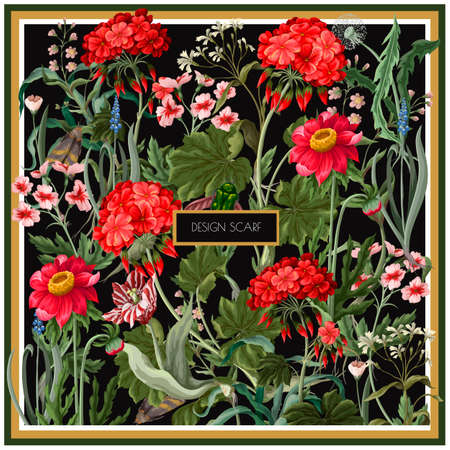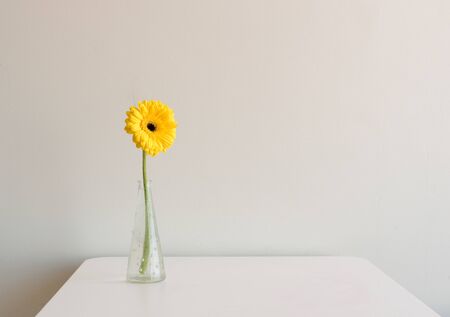Introduction: Love, Symbols, and Space
Across centuries and continents, the language of love has often been spoken through symbols—timeless emblems that transcend words to evoke passion, fidelity, and enduring affection. In contemporary UK interiors, a subtle yet striking revival is underway: classic love charms such as Mandarin ducks and peonies are finding their place in modern British homes. These motifs, steeped in East Asian tradition, are being reimagined within the framework of British design sensibilities. This cross-cultural convergence not only enriches the visual landscape of our living spaces but also weaves a narrative that bridges historical romance with present-day aesthetics. As we explore this fascinating blend of heritage and modernity, let us delve into how these storied symbols infuse British homes with new meaning—creating environments where every detail tells a story of love, connection, and beautifully curated space.
2. Mandarin Ducks: From Chinese Legend to British Living Rooms
Within the realm of classic love charms, Mandarin ducks have long occupied a cherished place in East Asian traditions, celebrated as enduring symbols of fidelity and devotion. These birds, often seen in pairs, are famed in Chinese legend for choosing lifelong mates—an association that naturally lends itself to romantic symbolism. But how do these delicate icons make their way into the heart of contemporary UK décor, especially beyond the overt flourishes of chinoiserie?
The Symbolic Allure of Mandarin Ducks
Mandarin ducks represent more than ornamental beauty; they evoke a sense of harmony and lasting partnership. In the context of British interiors, where subtlety and understated elegance reign, these emblems find new life—not through overt displays but via nuanced integration.
| Aspect | Traditional Meaning | Contemporary UK Décor Interpretation |
|---|---|---|
| Lifelong Pairing | Symbol of marital fidelity and unity | Paired motifs in textiles or ceramics—quietly reinforcing togetherness |
| Aesthetic Form | Bright plumage symbolising joy and luck | Muted tones and stylised designs blending with British palettes |
| Cultural Context | Featured in wedding gifts and home altars in China | Discreet decorative accents—bookends, wall prints, or cushion embroidery |
Bespoke Integration Beyond Chinoiserie
While chinoiserie once dominated as the primary means for incorporating Asian motifs into Western design, today’s UK decorators are drawn to more refined expressions. Imagine a pair of sculpted Mandarin ducks perched on a reclaimed oak mantelpiece or etched subtly onto a hand-thrown vase—these touches speak to a layered appreciation that transcends mere trend-following. The birds become conversational anchors: not just symbols imported wholesale from another culture but thoughtfully adapted elements that enrich the story of a modern British home.
Creating Space for Meaningful Connection
This gentle fusion of East and West invites us to consider how objects communicate values across cultures. In reimagining the role of Mandarin ducks within UK interiors, designers create environments that feel at once familiar and evocative—a space where tradition is honoured but never static, and where love’s emblems nestle quietly amidst everyday life.

3. Peonies in Full Bloom: A Blossoming Motif
Synonymous with romance, prosperity, and good fortune, the peony has long held a cherished place in Eastern symbolism. Yet, its lush petals and luxuriant form have also found fertile ground in contemporary UK decor, where its rich associations are reimagined through a British lens. Traditionally, peonies symbolise not only passionate love but also enduring happiness and wealth—a sentiment that resonates powerfully within the context of modern romantic interiors.
Across British homes, the peony’s visual impact is most vividly realised in textiles—think sumptuous velvet cushions emblazoned with painterly blooms or drapery adorned with sprawling peony patterns that bring an air of opulence to living spaces. Wallpapers featuring oversized peonies in muted or jewel-toned palettes are increasingly favoured for creating a statement wall, infusing rooms with both drama and softness. This decorative approach nods to classic English floral heritage while subtly referencing the flower’s cross-cultural significance as an emblem of luck and lasting affection.
Floral arrangements, too, play a pivotal role in this reinterpretation. In British interiors, peonies often take centre stage in abundant bouquets displayed on mantelpieces or dining tables during their brief but glorious season. Their layered blossoms evoke both nostalgia and contemporary sophistication—bridging country house tradition with urban chic. When paired with other symbolic botanicals like roses or eucalyptus, the effect is a space that feels both timeless and inviting, echoing the deeper meanings attributed to these blooms across cultures.
This seamless integration of peonies into UK decor highlights a growing appreciation for meaningful motifs—where style and symbolism coalesce. By embracing the peony’s storied past and adapting it through wallpapers, textiles, and fresh arrangements, British interiors achieve a delicate balance: celebrating beauty while weaving subtle narratives of love, luck, and prosperity into everyday life.
4. Translating Tradition: Other Love Emblems amongst British Accents
As Mandarin ducks and peonies take centre stage in the cross-cultural love story of British interiors, a myriad of other classic motifs join this rich visual dialogue. Among these, the double happiness character, intricate lucky knots, and the auspicious use of red hues stand out—each carrying centuries of symbolism from East Asian traditions. When woven thoughtfully into UK decor, these emblems become more than decorative flourishes; they are poetic gestures that invite a sense of warmth and connection, seamlessly blending heritage with contemporary British design sensibilities.
Double Happiness & Lucky Knots: Symbolism Meets Subtlety
The double happiness symbol (囍), an emblem of marital bliss in Chinese culture, finds new life when subtly incorporated into British interiors. Rather than overt displays, UK designers often opt for understated approaches—perhaps embroidered on a velvet cushion or embossed on ceramics—offering a quiet nod to tradition without overwhelming the aesthetic balance. Similarly, lucky knots make their appearance as elegant tiebacks for drapes or as delicate wall hangings, translating age-old wishes for harmony into tactile accents that feel right at home alongside British craftsmanship.
Red Hues: From Festivity to Sophisticated Accent
In traditional contexts, red represents luck and joy—particularly in weddings and celebrations. Within the UK context, bold crimson might be tempered with softer palettes or used as an accent within otherwise neutral spaces. The result is a fusion that feels both vibrant and refined: think a scarlet vase atop a Windsor sideboard or ruby-toned throws layered over classic Chesterfields. This interplay allows British interiors to borrow from the exuberance of Eastern celebrations while maintaining the restraint and elegance characteristic of local tastes.
Classic Motifs & UK Design Sensibilities: A Comparative Table
| Motif | Traditional Meaning | Classic Use | UK Adaptation |
|---|---|---|---|
| Double Happiness | Marital bliss, union | Wedding banners, paper cuttings | Cushion embroidery, ceramic embossing |
| Lucky Knot | Harmony, good fortune | Ornamental pendants, gifts | Drape tiebacks, subtle wall decor |
| Red Hue | Luck, celebration | Banners, lanterns, attire | Pops of colour in soft furnishings or artwork |
This thoughtful translation of motifs ensures each space tells a layered story—one where time-honoured love emblems harmonise with British interiors’ penchant for comfort and refinement. The result is a uniquely personal decor language: at once globally inspired and distinctly rooted in the UK’s modern domestic landscape.
5. Designing with Intention: Incorporating Love Charms Thoughtfully
When weaving Mandarin ducks, peonies, and other traditional emblems into British interiors, intentionality is key. Rather than simply placing symbolic items on a shelf, consider how these motifs can harmoniously blend with the unique character of your home. Start by reflecting on your personal connection to each emblem—whether it’s the devotion represented by a pair of Mandarin ducks or the prosperity suggested by lush peony blooms—and let this guide your placement and styling decisions.
Balance Heritage and Modernity
Avoid creating a pastiche; instead, let these classic love charms sit comfortably among British design sensibilities. For example, a delicately painted porcelain duck can be set against a backdrop of understated Farrow & Ball hues, or peony motifs might be introduced as subtle embroidery on linen cushions nestled in a classic Chesterfield armchair. This juxtaposition creates both visual intrigue and cultural dialogue within your living space.
Curate with Care
Think beyond surface decoration. In a Victorian terrace or Georgian flat, use love emblems as focal points without overwhelming the existing architecture. Displaying an antique Chinese lacquer box on a reclaimed oak mantelpiece or placing a single silk peony beside vintage ceramics adds narrative depth while maintaining harmony. The goal is thoughtful curation—each symbol should feel at home within its new context.
Celebrate Conversation Pieces
Love charms become most meaningful when they invite conversation. Choose objects that spark curiosity: perhaps an intricately carved wooden Mandarin duck set atop a modern console table, or framed prints of peonies alongside British botanical illustrations. These pieces act as bridges between cultures and eras, offering stories that enrich the environment and encourage heartfelt exchange among guests.
Honour Authenticity
Select genuine artisanal creations over mass-produced replicas wherever possible. Hand-painted ceramics from Jingdezhen or hand-embroidered textiles convey authenticity and respect for tradition. When paired with locally sourced British furnishings—think Cotswold stoneware or Welsh wool throws—the result is a layered aesthetic that celebrates both heritage and individuality.
Ultimately, designing with intention ensures that classic love charms not only enhance the visual beauty of your home but also infuse it with meaning, warmth, and cross-cultural resonance—a truly contemporary approach to UK interior décor.
6. Cultural Echoes: The Lasting Appeal of Symbolic Décor
It is no coincidence that motifs like mandarin ducks and peonies have found a cherished home within UK interiors, resonating far beyond their Eastern origins. Their enduring appeal lies in their ability to bridge the gap between tradition and modernity, weaving tales of love, fidelity, and harmony into the fabric of contemporary British homes. In a culture known for its appreciation of heritage and storytelling, these classic emblems are more than decorative flourishes—they are subtle nods to the universal longing for connection and happiness.
As British design increasingly embraces global influences, these time-honoured symbols bring both visual poetry and profound meaning to living spaces. Mandarin ducks, often displayed as pairs, evoke enduring partnership—a sentiment appreciated across generations. Meanwhile, the lush beauty of peonies captures hopes for prosperity and romantic fulfilment, echoing a desire for richness in both life and love.
Integrating such emblems into modern décor is also an act of personal expression. Whether chosen as statement pieces or delicate accents, they allow homeowners to curate environments that reflect their own values and aspirations while honouring cultural stories from around the world. This fusion of old and new—East and West—creates spaces that feel deeply personal yet universally inviting.
Ultimately, the lasting appeal of these symbolic motifs within UK interiors speaks to our collective yearning for meaning amidst daily life. They serve as gentle reminders that design can be more than surface beauty; it can also be a canvas for hope, memory, and emotional connection—qualities that never go out of style.

